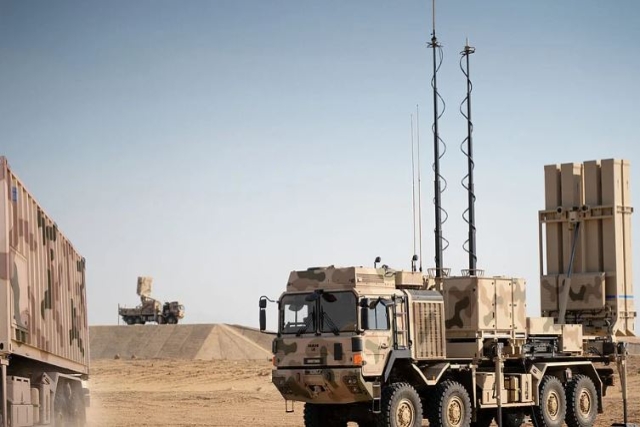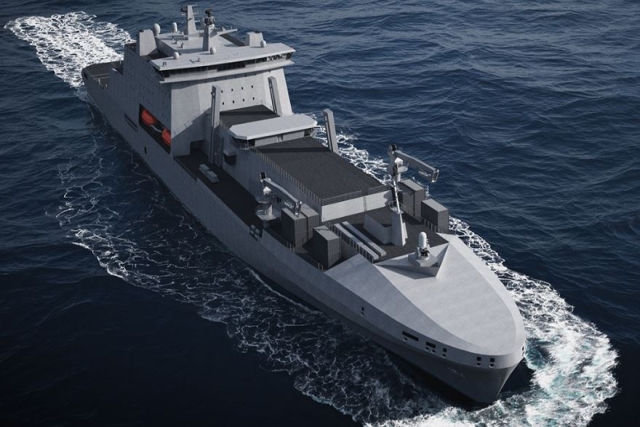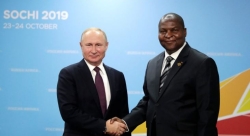Logos’ Stealthy Hybrid-Power Motorcycles To Be Near-silent, Long-range With Extreme Terrain Mobility Option

In an interview with Defenseworld.net, Wade Pulliam, director of Logos Technologies' advanced projects department talked about his company's latest project with DARPA and the newly introduced advanced activity-based intelligence (ABI) solutions.
DW : Can you tell us about Logos and the kind of technology and defense solutions your company provides?
Wade Pulliam: Logos Technologies is a diversified defense and energy company, specializing in the development of advanced intelligence, surveillance and reconnaissance (ISR) systems, airborne sensors and cyber analytics.
DW : Logos was recently awarded a contract from DARPA to develop Stealthy Hybrid-Power Motorcycles. What can you tell us about the contract and the technology?
Wade Pulliam: The contract is a DARPA-funded small business innovation research (SBIR) grant to develop a military-use hybrid-electric motorcycle with near-silent capability. When fully matured, the technology will allow small, distributed military teams to move long distances across harsh enemy terrain,quickly and stealthily. The Logos Technologies/BRD hybrid will combine Logos Technologies’ quieted, multifuel hybrid-electric power system with a cutting-edge, off-road electric motorcycle platform developed by BRD. This initiative marks the first time that a two-wheel-drive, multifuel hybrid capability has been integrated into a full-size off-road motorcycle. This rugged single-track vehicle with its extended range, near silent, all-wheel-drive capability, will allow U.S. forces to operate in extreme terrain conditions and contested environments that before were difficult to impossible to do so. With a growing need to operate small units far from logistical support, the military may increasingly rely on adaptable, efficient technologies like this hybrid-electric motorcycle. Beyond design improvements to efficiency and mobility, the hybrid-electric approach allows for extended periods of near-silent, electric-only-propulsion, as well as the generation of supplemental electric power for use by personnel in the field.
DW : Can you elaborate on efficiency and mobility improvements that will be included in the development of the vehicle?
Wade Pulliam: The vehicle will provide Special Forces, and potentially Marine Corps expeditionary forces, with a near-silent, long-range, extreme terrain mobility option. The bike will be lighter, easier to handle and more efficient than current platforms. The hybrid electric drive provides the silent mobility, fuel efficiency and performance of a high-performance electric engine with the reliability and range of a traditional gas-powered motor. Additionally, the electric powertrain will provide an on-the-go charge station for soldier devices. As a multifueled engine, operators will also be able to scavenge for fuels of opportunity when deployed. The bike will be significantly quieter than existing platforms, operating at no louder than 75 decibels at seven meters, or roughly the equivalent of an average telephone dial tone. This will allow U.S. forces to collect intelligence and perform other clandestine operations in highly contested areas.
DW : Besides developing hybrid-powered motorcycles for DARPA, what other contracts has the agency awarded your company?
Wade Pulliam: Logos has numerous contracts with DARPA, however due to the sensitive nature of the work, we are unable to elaborate.
DW : Can you tell us about the US military contracts you’re currently fulfilling?
Wade Pulliam: Logos Technologies currently works on a range of military contracts, including the Kestrel Wide-Area Persistent Surveillance system (managed by U.S. Naval Air Systems Command), the Processing Exploitation and Analysis of Large Data Sets (PEALDS) program (with AFRL), and numerous research and development programs across the services.
DW : Are you pursuing or fulfilling any foreign contracts at the moment? If so, can you elaborate?
Wade Pulliam: Logos Technologies does not currently hold any international contracts at this time. We are currently in the process of obtaining export licensing for several of our ISR products.
DW : You recently introduced advanced activity-based intelligence (ABI) solutions. What can you tell us about this? And who are your primary customers?
Wade Pulliam: Logos Technologies’ activity-based analytics (ABA) offers a“big picture” view for enhanced situational awareness layering data collected from a range of sources to create a complete and up-to-date pattern of life analysis. ABA utilizes any data that can be indexed by time and location, including full-motion video, multispectral imagery, signals intelligence (SIGINT), human intelligence (HUMINT) and measurement and signature intelligence (MASINT) to identify patterns of life, relationship networks and long-term trends in a given area. More than simply collecting data, ABA connects the dots. At Logos Technologies, we train analysts to recognize the details that matter. Our tools and training enable users to identify and track relationships and transactions, locations and objects as they happen, while piecing together the broader implications or trends. Information management Logos Technologies is an industry leader in intelligent data indexing and storage, allowing analysts to unlock the full potential of data. Gigabytes of operational intelligence can be immediately cross referenced with multiple sources, metatagged for future use or centrally indexed for intelligence teams operating anywhere in the world. Geotemporal tagging Unlike traditional intelligence collection methods, ABA focuses on events and relationships throughout a geographic area, rather than specific actors in isolation. Once gathered, data from multiple sources can be indexed with precise location and temporal tags, creating a complete historical picture of a location. Data normalization Our tools can receive information in any form and condition it for exploitation. Beginning with unstructured metadata, our technology can identify missing datasets, combine different protocols and match those with existing resources to anticipate behavioral patterns and provide a highly accurate intelligence report.










